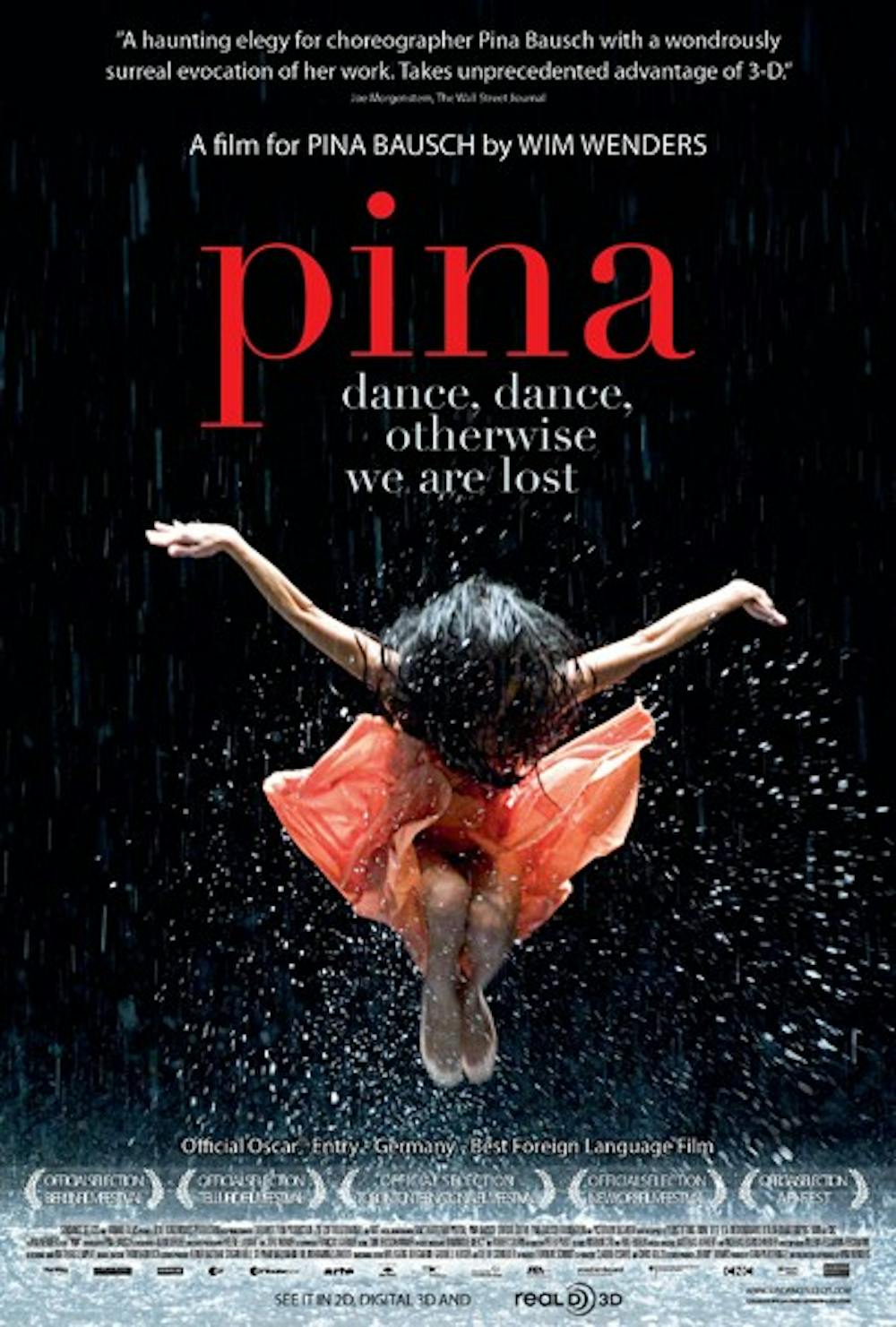Playful music fills the theater. There is no dialogue — only dress-adorned women drifting into the screen's view. Suddenly, a group of them breaks out into quickly executed and synchronized, combative movements that vaguely resemble what just might be a dance routine.
A mob of male dancers enters the screen, and both genders battle in rhythmic responses to the music without saying a word. This is “Le Sacre Du Printemps.”
In the past, this performance might have thought to be part of a theatrical play, but it is actually the dance routine of the company members of Tanztheater Wuppertal Pina Bausch. The peculiar blend between theatre and choreography is accredited to the choreographer and dancer Pina Bausch. The eponymous 3D documentary “Pina” highlights the uniqueness of her life work as an international inspiration.
The film includes four of her pieces: “Café Müller,” “Le Sacre du Printemps,” “Vollmond” and “Kontakthof.” The 3D effects capture the dancers’ emotion, swiftness, strength and fragility, and the visuals allow the audience members to imagine themselves just below the stage of a live play.
“Café Müller” tells the story of loneliness and fear. A dancer walks about a room filled with chairs and tables in a trance-like state, eyes closed. An accompanying dancer helps his lost friend find his way through the sea of furniture. “Pina” is a superb utilization for 3D filming of the theater-style dance.
The feature film is already an official Oscar entry for Best Documentary and Best Foreign Language Film.
Though the interviews are authentic, the cinematography stages them more like a traditional movie scene than the journalistic take of a documentary. Archive footage of Pina working with her dancers is also featured in the film. Her true passion for the arts comes through in her interviews and opinionated commentary.
For years, director Wim Wenders (“Wings of Desire,” “Buena Vista Social Club”), a long-time friend of Bausch’s, had wanted to collaborate with Bausch after being exposed to her work. The time was never right until 3D screening came into the picture, so to speak.
But then tragedy struck with Bausch’s sudden death five days after being diagnosed with cancer and only two days before shooting for the film began.
As a tribute to her life and work, the film is an emotional memorial. The majority of the film consists of one dance routine after another in lieu of lengthy interviews. This too was unexpectedly refreshing.
For open-minded audiences, “Pina” showcases a beautiful kind of art.
Reach the reporter at cstarboa@asu.edu
Click here to subscribe to the daily State Press newsletter.





